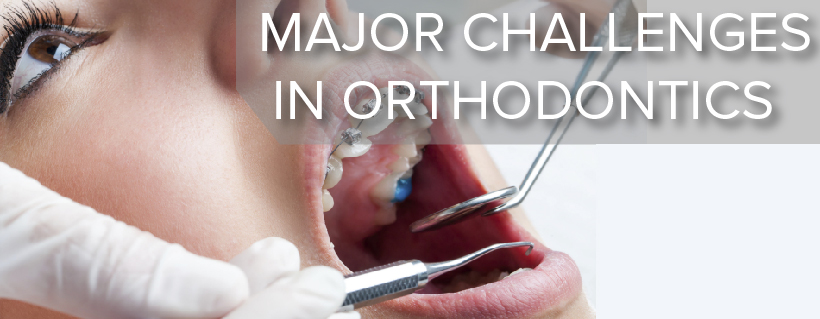Menu

Date: 2nd Oct. 2017
Let us talk about how we can offer better treatment options to our valuable patients in the field of orthodontics by maintaining isolation in case of bonding or in case of a patient who is undergoing orthodontic treatment and visits the clinic impromptu with a debonded bracket.
While performing orthodontic therapy, the last thing a dentist would want is a debonding in the beginning or during treatment. A single orthodontic bracket debonding means the dentist has to remove the modules and archwire, grip the debonded bracket, and finally remove all the excess composite from the orthodontic bracket mesh and then proceed to bond the bracket back onto the tooth surface.
In the initial stages, debonding of orthodontic brackets is rare since every dentist performs a thorough prophylaxis before going ahead with the procedure. Once the treatment progresses patients are expected to maintain good oral hygiene, for which there are many options, but rarely does that happen. As the treatment progresses there is a lot of materia alba on and around the brackets. Patients often say that it is difficult to maintain oral hygiene because of the said treatment. Eventually, because of the high plaque content in the mouth and patients eating sticky food substances, an orthodontic bracket debonds.
Now, if such a patient visits the clinic, it is very common to find that the gingiva has ballooned because of poor oral hygiene. Even on simply touching, there is bleeding and the whole situation paints a very melancholic picture in the dentist’s mind.
Nevertheless, the dentist proceeds with the damage control and realises that he first needs to scale the tooth thoroughly, or else the orthodontic bracket will not bond accurately.
Many a times, the situation pans out in the following manner: the offending bracket is sand blasted to remove evidence of flash and residual dual cured composite, traditionally used in orthodontic bracket bonding cases, following which the tooth is thoroughly cleaned.
At this point, the trickling of gingival blood begins, discouraging the dentist from going ahead with the procedure. The dentist first prescribes an astringent for local application, a Chlorhexidine Mouthwash and encourages the patient to improve his oral hygiene. Most of us who have had the misfortune of landing in this situation would echo our sentiments on how frustrating this can be.
Traditionally, at this point of time dentists have been prescribing astringent solutions like Zingisol, which is an astringent or Pyosan if there is also gingival swelling. Pyosan offers much relief to the irritated gingiva under brackets because of the presence of counterirritant chemicals like thymol menthol and iodine.
Such solutions when rubbed onto the gingiva reduce the oozing from gingival crevices. And astringents present in this product like glycerine and tannic acid reduce gingival bleeding. A great option for a mouthwash would be Chlorhexidine because of its property of substantively, where old plaque present on the tooth surface reduces in quantity and new plaque formation is hampered. Thus, improving the overall hygiene of the patient and improving plaque control. These are time tested products but unfortunately, they warrant another dental chair side visit as it takes time for the results to show.
Now imagine if there was a way to stop the uncontrolled gingival bleeding, gain a clean operating field devoid of debris, remnant tissue tags, etc. and then bond the debonded orthodontic bracket, how simple life would be. Soft tissue lasers have just the answer for you. Soft tissue lasers not only arrest bleeding, produce haemostasis, help in getting rid of tissue tags and basically setting the score straight for the dentist.
In such an ideal situation, carrying out a damage control job would not only save time and look very professional, but it would also save both the doctor and the patient from a lot of anxiety. A dental chair side visit would be saved and the treatment could proceed uninterrupted. Thus, by use of a soft tissue laser we can overcome many hurdles and achieve professional success in a short span of time.
There are instances in which during the orthodontic treatment the bracket position needs to be changed to correct the apertognathia or to close the bite. Traditionally in cases of deep bite orthodontic brackets are placed more gingivally. Many a times, after a duration of around 6-8 months we find that the gingiva in the cervical portion of the bracket has ballooned out and the bracket is partially hidden from site. When such an area is touched with a probe, it provokes uncontrolled bleeding.
In cases like these, a soft tissue laser can easily expose the portion of the bracket submerged under the gingiva and at the same time, reduce the bleeding and provide some solace from the ongoing gingivitis.
Once the gum in the area is exposed, the dentist can measure and determine if the bracket position needs to be changed or kept the same. Thus, this situation drastically improves the dentist’s capability to diagnose the case and rectify a problem if he or she noticed it at the earliest. This saved a lot of time during the orthodontic treatment and will have a lot of value when you look back at the total duration of the treatment.


| PRODUCTS | QTY | PRICE | VALUE in INR |
|---|
| PRODUCTS | QTY | PRICE | VALUE in INR |
|---|
One thought on “Major Challenges in Orthodontic Treatments”
Great blog provided me great information the Challenges you provided faced in orthodontics treatment are very informative and clear thanks for such a great blog.